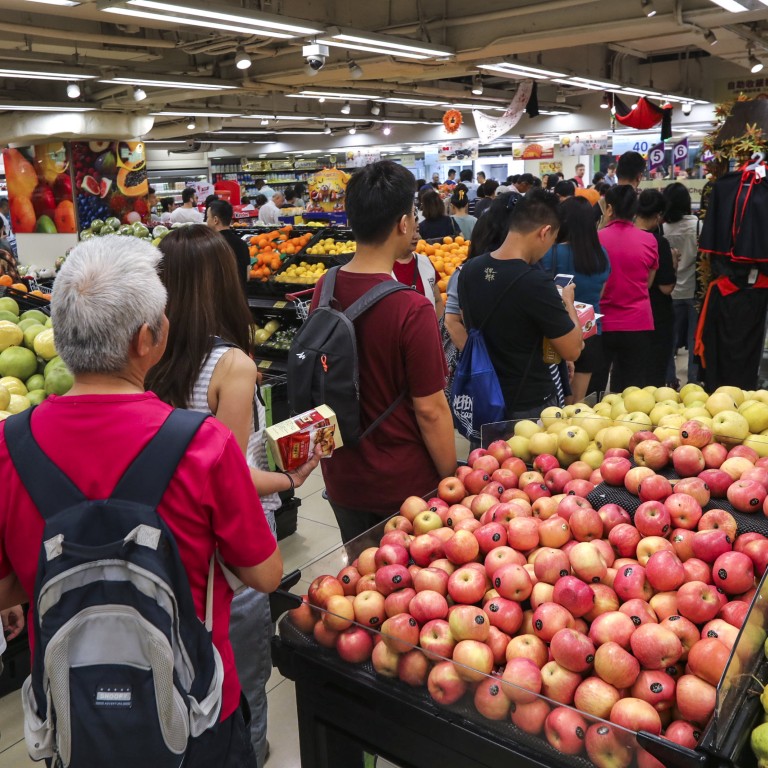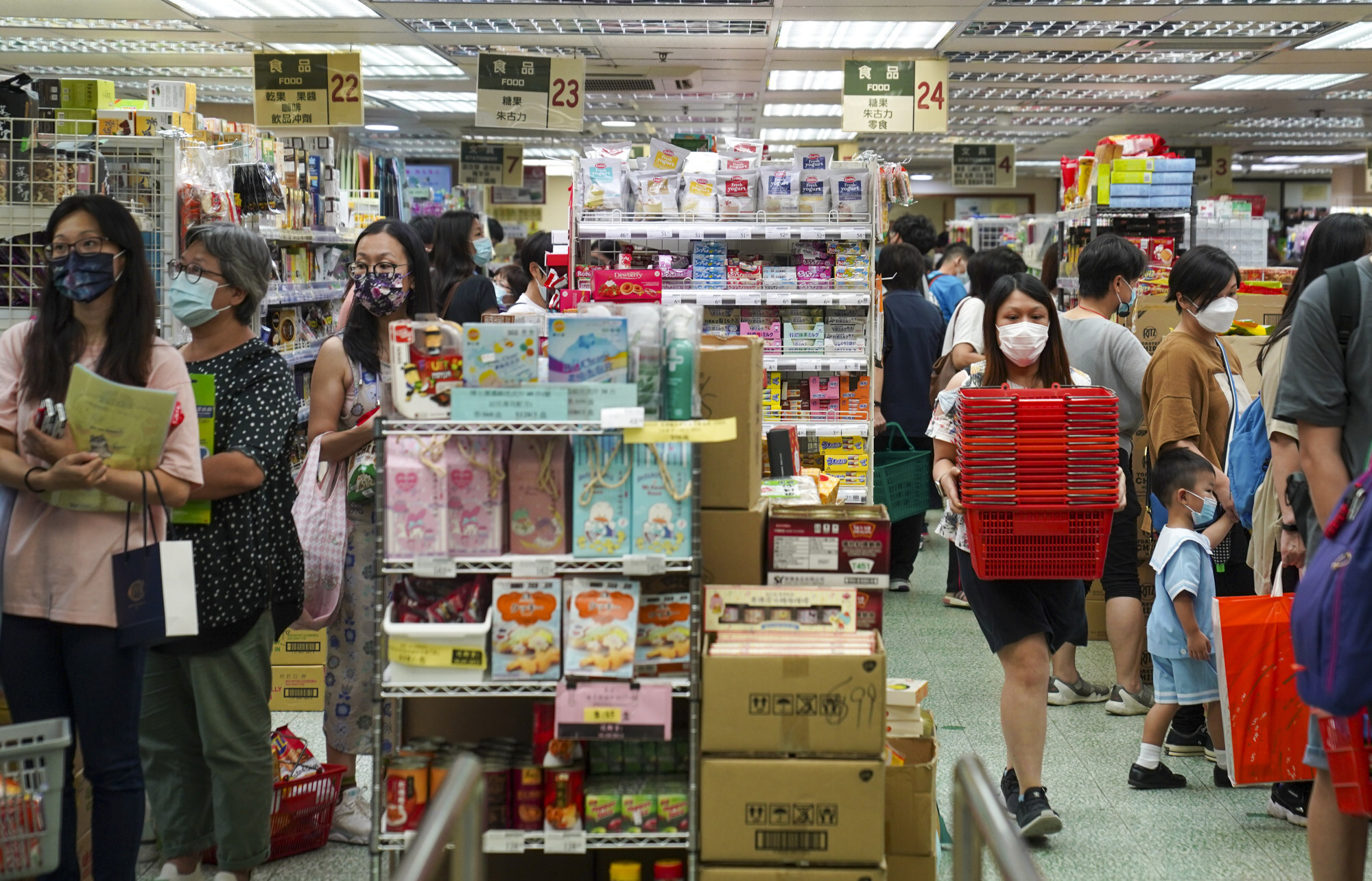
Coronavirus: 4.2 per cent rise in food prices at Hong Kong supermarkets amid fifth wave surge and panic buying
- Consumer Council tracks cost of 90 grocery items across 11 categories at three major supermarket chains
- Food items with longer shelf lives saw the highest price jumps, while the cost of rice rose 9.2 per cent and eggs went up 8.2 per cent
Prices in supermarkets rose 4.2 per cent from January to March, coinciding with a rash of panic buying fuelled by fears of a lockdown as Hong Kong’s fifth wave of coronavirus infections gathered steam, according to the city’s consumer watchdog.
The Consumer Council used its “Online Price Watch” tool to collect and track the cost of 90 grocery items in 11 categories at three local supermarkets – Aeon, ParknShop and Marketplace by Jasons.
All 11 product groups tracked by the watchdog recorded an increase in prices, ranging from 0.2 per cent to 24.8 per cent at the height of the fifth wave in March.
Food items with longer shelf lives saw the highest price jumps, including pre-packaged cakes, which rose 24.8 per cent. The cost of rice climbed 9.2 per cent, eggs went up 8.2 per cent, and canned vegetables and soup rose by 6.8 per cent.

“During Hong Kong’s fifth wave … panic buying re-emerged across supermarkets, causing the price of certain items to swell,” said Dr Lui Wing-cheong, vice-chairman of the Consumer Council’s research and testing committee.
At a press conference on Wednesday, council chief executive Gilly Wong Fung-han said the price surges were to be expected given the unforeseen nature of the fifth wave.
“During the first quarter, because of the fifth wave of the pandemic, the demand for groceries suddenly went up … because everyone wanted to secure foodstuff and [hygiene] materials,” she said.
Wong added that an initial logistics backlog also added to food supply woes, triggering more people to panic buy.
“Hopefully, with the relaxation of air and marine transport, international shipments coming into Hong Kong will be much smoother, so consumers can enjoy a wider range of products at a lower price,” she said.
Wong also stressed that officials and the mainland Chinese government had assured residents that goods would continue to flow despite disruptions caused by the coronavirus outbreak both at home and over the border.
“We believe it won’t be a concern,” Wong said in reply to a question on whether lockdowns in Shanghai and Guangdong would affect Hong Kong’s food supply.
Hong Kong to release 5,500 housing units set aside as Covid isolation facilities
The survey also found the aggregate average price of 63 items available at all three major supermarkets rose in March compared with January. Some 27 items available in two of the grocery chains surveyed increased 8.3 per cent in price during that period.
The council also noted that the price of instant noodles had jumped by 6 per cent, while frozen dim sum and meat were 6.4 per cent more expensive in March.
The watchdog also received 24 complaints from consumers on price disputes over grocery products in the first three months of the year, up 60 per cent from 15 similar reports in the same period last year.

